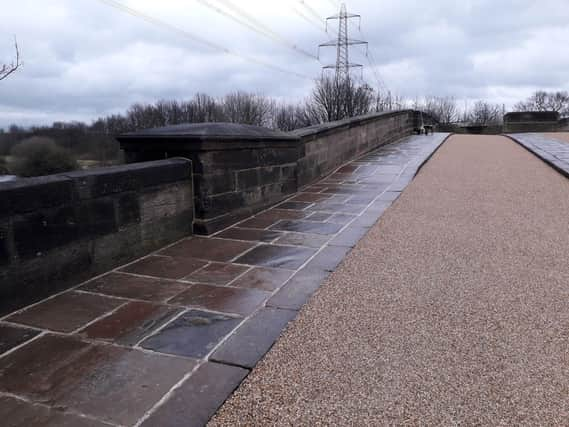Wakefield Council invests thousands to repair historic bridge over A1


The scheme will make the bridge safer and more accessible for pedestrians and cyclists to use.
The bridge, which dates from 1804, is listed as a Scheduled Monument. It carried the Great North Road, which was the main route used by mail coaches travelling between London, York and Edinburgh. In the 1920’s the road was designated the A1 by Ministry of Transport, the beginning of the modern British national road system. Subsequently, the A1 has been re-routed twice.
Advertisement
Hide AdAdvertisement
Hide AdBy refurbishing the bridge, which was closed to motor vehicles in 1966, the council aims to preserve the structure for many years to come and to encourage more people to use the route to boost health and improve wellbeing.
Coun Matthew Morley, cabinet member for planning and highways at Wakefield Council, said: “This is a fantastic project. It has improved the condition of the bridge and enhanced safety for pedestrians and cyclists at this historic crossing point over the River Aire, which is one of the links between the Wakefield district and North Yorkshire.
“This area is now a much more attractive and safer area to walk and cycle and gives people access to a wider area for outdoor activities and the added health and wellbeing benefits this brings. This is especially relevant at this time as many of us recognise the benefits of regular exercise for physical and mental health as we continue to face the challenges of the global pandemic.”
The works include the repointing and repair of the stonework, together with reconstruction of the roads and footways.
Advertisement
Hide AdAdvertisement
Hide AdConsent for all the work to the bridge was obtained from Historic England and special consideration was given to the matching of materials and methods of construction as a consequence.
In the past the bridge has suffered from vandalism and theft of natural stone paving flagstones. Remaining flagstones were taken up before the scheme started, stored and reused in the scheme with measures taken to better secure them to reduce the risk of theft. The old concrete kerbs were replaced with reclaimed stone kerbs that match the reinstalled stone flagstones. More substantial barriers have been put in place to prevent vehicles going onto the bridge.
The project started on site in August 2020 and was completed in late December.
The scheme is part of Wakefield Council’s capital programme for highways and is funded through the Local Transport Plan Fund.